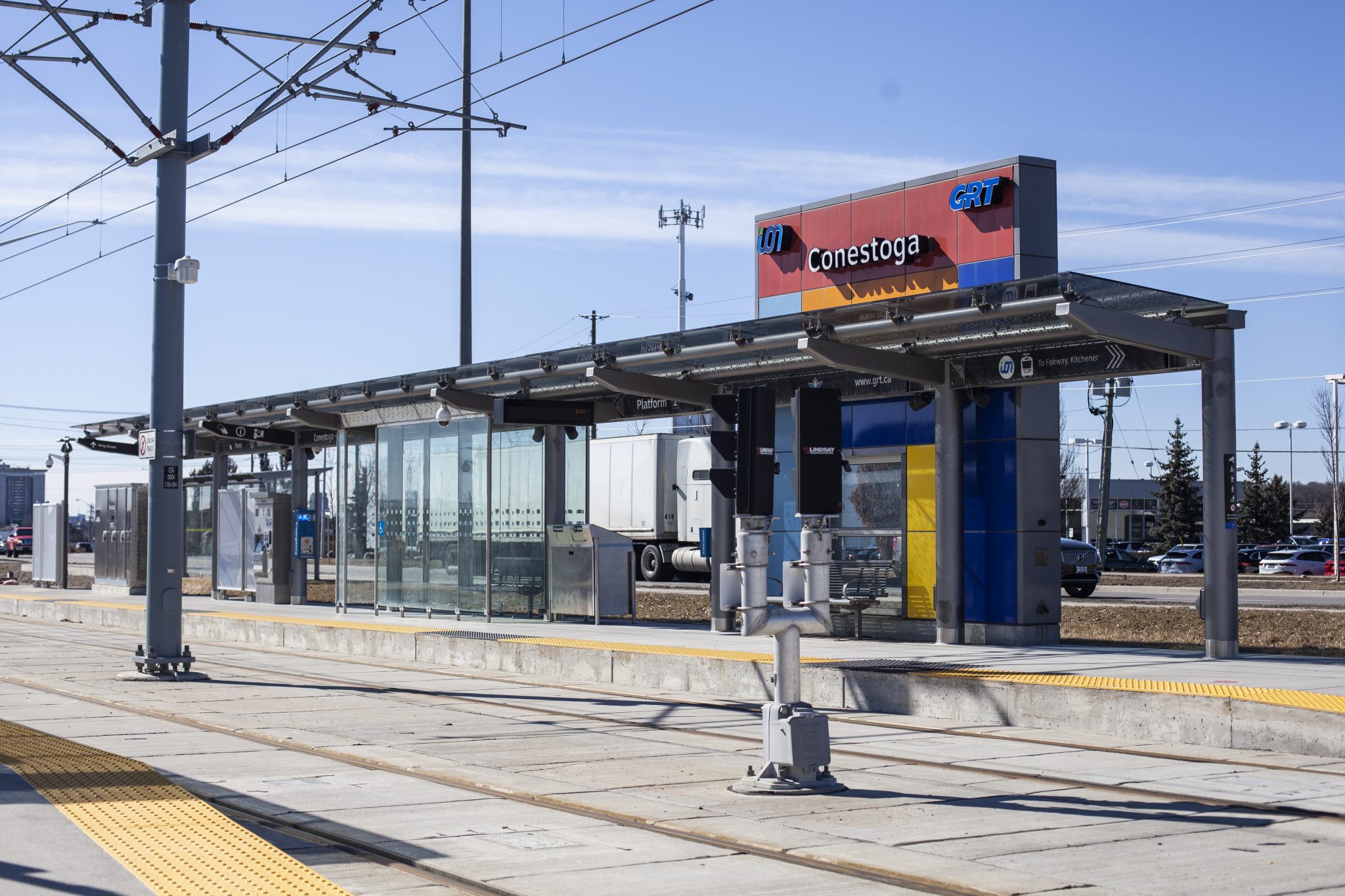LRT still delayed but region has hope for launch in the near future


With Spring finally approaching, so too does the expected launch of service for the ION light rail transit (LRT) system currently in testing across the Region of Waterloo, following a series of unforeseen delays.
The original budget for the LRT project was $818 million This was divided amongst the three levels of government, with the Government of Ontario providing $300 million, the Government of Canada providing $265 million and the Region of Waterloo providing $253 million.
The Region’s justification behind this expenditure, as stated in “The ION Story,” released in Fall 2016, was that without the system, “500 new land kilometres of roadways [would be] needed to accommodate [city] growth,” which would instead cost Regional taxpayers, exclusively, approximately $1.4 billion.
That budget grew by $50 million, to a total of $868 million, due to a series of delays in vehicle delivery by Bombardier, meaning its arrival in the Region is anxiously anticipated.
“Right now, Bombardier and GrandLinq continue to make progress on their work on the alignment and we continue to target the Spring 2019 opening date,” said Brendon Simon, senior project engineer for the Region of Waterloo’s rapid transit project.
Following the delivery of the vehicles, the next obstacle that the Region has encountered was making sure that they were “service ready.”
The ultimate goal behind the Region’s nearly eight-year project has been to create what they call “a unified transit network.”
“That means that, for a passenger perspective, you have a vehicle that can get you where you need to go, from [point] ‘A’ to [point] ‘B’ in a reliable manner,” Simon said.
On April 18, 2018, the Region released an update about the LRT construction, system testing, vehicle delivery and service launch. The report states that all the vehicles must obtain a Preliminary Acceptance Certification (PAC) and Final Acceptance Certification (FAC) before operation can occur.
“All 14 ION vehicles are required to complete “burn-in” testing, with each vehicle being required to complete 600 kilometres of reliable travel before the vehicle is issued a final acceptance certificate (FAC) by the Region,” the ION update report said.
During the testing period, the Region has experienced a series of minor glitches and technical issues with the vehicles, which has caused unexpected setbacks for the project’s official launch.
“Bombardier has been working on those issues and getting through a modification upgrade program to get those reliable — [it takes] about 50 to 100 hours per vehicle,” Simon said.
Once the LRT system officially launches, following a report that will be presented to the Region, the LRT network will fall under the jurisdiction of GRT.
“Everything will be under the GRT brand — and [the] GRT website, GRT customer service phone number, and all those fares are under our GRT EasyGO fare system. Your student card can get on both the LRT and our regular bus network as well,” Simon said.
As far as the impact this will have on OneCard-related fees, that will be negotiated on an ongoing basis with GRT, as the Region is not directly involved in that process.
The ultimate goal behind the Region’s nearly eight-year project has been to create what they call “a unified transit network.”
“That means that the LRT is complementary to our conventional buses; so a student can go anywhere in the Region, whether it’s via bus or train — and that’s what we’re trying to do, is create more options for moving around the Region,” Simon said.


